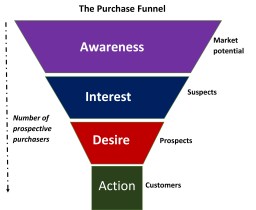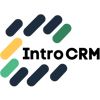Previously, we dug into answering what are outbound sales? Outbound sales are when you initiate a...
What Are Outbound Sales and Useful Context in 2021
There are two primary ways to get potential customers into your sales funnel: inbound and outbound sales. Inbound sales are when people come to you! So, what are outbound sales?
Great question! We’re going to answer your question about what are outbound sales by providing actionable tips that you can use to grow your company. It’s about being proactive and starting new conversations to generate new business.
Here’s what we’ll cover:
- Why your business needs sales
- The difference between inbound and outbound sales
- Tips for generating warm leads through outbound sales
- What are outbound sales benefits for your business
- What it looks like to outsource your outbound sales
This builds on recent sales funnel work we’ve done covering using video for inbound sales and building a new customer onboarding process.
Why your business needs sales
Sales are essential to every business. After all, you can’t go very long without making money!
The gist is simple. As your customers move farther into the funnel—or further along the buying process—some percentage will fall out. This leaves you with a much smaller pool of people who are ready to become paying customers of your product.
If you want repeatable sales, you want to build a system—also known as a sales strategy—to ensure that you are both generating leads and making the most of the leads that you have generated. How do you build a strategy? And what are outbound sales going to relate? Be patient with us, we’re getting there.

In previous posts, we’ve talked about why it’s crucial to think about each interaction you have with a customer or potential customer as a funnel. This post answering “What are outbound sales?” is the latest in a series of practical tips shared on the Intro CRM blog.
How to build a sales strategy
A good sales strategy is unique to your business and your ideal prospects based on industry, niche, and best practices/standards in your world; however, every sales strategy has a series of steps to help a customer walk through the sales funnel to become a paying customer.
In sales, there are two kinds of leads, inbound and outbound, there’s a good chance your sales funnels for each of these leads will look a little different, so let’s talk about what differentiates these groups of people.
We’ve shared a little bit around the concept of the sales funnel, and maybe we’ll talk more about how it all comes together one day, but today, we want to focus on the very top of the funnel, leads.
The difference between inbound and outbound sales
There are a few different kinds of leads, but before we dig into the source of where they come from, let’s talk about why timing matters in sales.
Timing in sales is about the combination of two things: Buyer qualification and buyer intent. And the good news is that you have some control over both—but not much.
Buyer qualification is the process of determining whether the lead is indeed the kind of person (or business) who has the problem that your product solves. Have you heard of the term “marketing qualified lead” before? That would come in here. You can use firmographic or technographic analysis to make this determination. These are characteristics like firm size, industry, location, and technologies used.
Buyer intent is about their intention to make a purchase decision. At the two extremes, you have someone with no interest and the other you have someone who is actively calling, emailing, or literally visiting your business ready to buy. But even if the timing isn’t right, you can use outbound sales to qualify a lead and then rely on marketing to keep the customer engaged—think social media, email lists, maybe even buying digital products or merchandise. So when they are ready to buy? You’re top of mind.
When your sales strategy combines both buyer qualification and buyer intent, it helps you conclude whether a deal is hot, or not. In practice, this means likely to close, or not.
Leads can be cold, warm, or hot.
A cold lead is usually uninterested and unknowing of the problem they are experiencing, or if they know, they aren’t actively looking for a solution. A warm lead has expressed some level of interest or awareness towards the product or the problem; maybe they did some googling or downloaded a resource you have! A hot lead is someone who has taken a big step towards getting your product in their hands. Think proactively scheduling an appointment, sending you an email, or maybe even purchasing the product!
Now that we’ve talked about the categorization process for a lead let’s talk about the organization process as a whole. Leads come from one of two places, inbound or outbound sales, and they can be cold, warm, or hot.
Let’s talk about the difference between an inbound lead and an outbound lead.
Inbound leads are the easy ones! They come to you. Inbound leads are often warm or hot, they are interested in what you have to sell, and they are already searching for a solution to a problem they face. In 2021, inbound leads are probably coming from content you’re generating—think your website, search, or social media.
Outbound sales are when you initiate a conversation with a prospective customer. Your prospect can be a company, department, or an individual contact. In order to conduct outbound sales, you need an ideal customer profile, contact information, a means of communication, and something to sell them.
Outbound leads, however, are often not currently looking for or interested in your product. Think, cold calling. They are usually considered cold leads. Sometimes, they are as cold as the Arctic! Outbound leads often don’t know they experience the problem you solve, or they aren’t currently looking for a solution to that problem.
What are outbound sales benefits for your business?
At Intro CRM, we are using outbound sales to help our customers improve your understanding of your customer profiles and generate new business at the same time. Think of it like market research that could literally pay for itself.
With outbound sales, timing is tricky. Sometimes there are B2B products that have an easier time, especially in markets like education or tax and regulatory compliance.
Even if you’re not immediately selling, you can learn about your customers using an outbound sales strategy, iteratively refining the lists you build, messaging, etc. And the next challenge is to figure out when you can make the sale.
Tips for generating warm leads through outbound sales
1) Develop an understanding of your ideal customer
Take the time to understand who exactly you’re selling to. What job do they work in? What could be frustrating to them? How does your product make their life easier? Are they the decision-maker? Once you have a deeper understanding of who you are selling to, it’s time to make a detailed contact plan. Go deeper and consider firmographic and technographic data. Knowing a firm’s industry is helpful, but how finely can you define their industry? What technologies do they use in their business?
2) Use the right tools for the job
You may know know what are outbound sales tools. It’s okay, if you’re new to this way of selling, it’s going to take some getting used to. Get started with free trials of ways to get contact information and find new companies. In 2021, there are so many tools available that you can make some progress testing different ones out. Put together a plan and know what you want to get out of each one. Know that in time, you’re going to want the paid versions to get more accurate and more comprehensive data.
3) What to include in your contact plan
It’s easy to believe that we can rinse and repeat a system, and it will work every time, but the reality is, as we mentioned earlier, people want to feel like people! It’s essential to use this step to cultivate a personal relationship that shows your potential customers that you care about making their lives better. Use friendly, approachable language and hunt down a personal detail or two, move away from static emails or copy and pasted LinkedIn messages.
Okay, let’s take a breather. This is a lot. Making outbound sales work well enough to make it worth the investment feels like a big undertaking. What if you’re not ready to do all that on your own?
What it looks like to outsource your outbound sales
Well, outbound sales is a lot of work. And if you landed here because you’re wondering what are outbound sales, know that there are ways to make it easier and more effective . Imagine how much time you could save by having someone do all your customer research and list building for you? We have your back.
Or think about the financial benefits! When you hire sales experts to help you sell, you see results much faster than hiring someone who doesn’t know what they are doing or requires a lot of training upfront. (In 2021, this is easier than ever with freelancing sites, but you still need to manage this person!) Let alone doing it all on your own. We can make that happen.
When you think about expanding, outsourcing your outbound sales can be an easy way to go to the next level without making your next hire. We’re all over it. We help customers identify repeatable ways to find new customers who they can solve problems for.
What if you just wanted help putting together a killer sales strategy? We can do that too. With the simple click of a button, your sales work can be done for you.
If you’re interested in learning more about how we can support your outbound sales process, get in touch with us. Not only do we know how to do it, we also invest in the best tools in the business so that you can sell like the best. Don’t worry about stretching out free trials anymore.
If you’re not ready for that step, that’s okay! Stay tuned. We’re talking about how to analyze your inbound leads to understand better who to sell to when it comes to outbound leads in our next post! Subscribe to our newsletter or podcast to stay in the loop.
